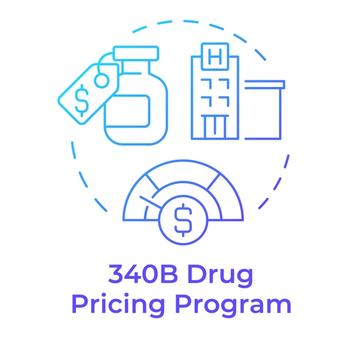
Study Reveals Inconsistent Wait Times for Decisions on Cancer Drug Coverage
The mean lag time between FDA approval and insurance coverage for 89 cancer drugs ranged from 2.3 months to 8.2 months. But cancer drugs approved more recently were more likely to have shorter coverage lags.
It often takes a long time for private insurance companies to decide whether they will cover certain medications for cancer patients after FDA approval, according to a research letter published last week in
After the FDA approves a drug, patient access to it is largely controlled by private insurers. Pharmacy and therapeutics committees (P&T) within these institutions decide on coverage and inclusion in formularies. But how long does this process take, and do certain factors cause delays or other variability?
In an attempt to answer these questions, a team of researchers, led by
To conduct the study, the researchers collected coverage determination dates for oncology drugs approved by the FDA between 2010 and 2019 from publicly accessible P&T meeting minutes and pharmacy documents. They collected data using an online search engine from 127 payers, including some of the largest U.S. health insurers such as Anthem, UnitedHealthcare, Centene, Cigna, Kaiser, and Humana.
The results revealed a median coverage lag for 89 drugs was 4.2 months, with most falling within a range of 2.3 months to 8.2 months. The median lag range was 32.2 months, indicating significant variation. From 2010 to 2018, there was a decline in median coverage lag and lag range.
Further, the results of a multivariable regression analysis found that drugs approved more recently were more likely to have shorter coverage lags and smaller variations in lag times. However, factors such as drug class, orphan drug status, and expedited review did not have a significant association with coverage lag.
“Drug coverage determination is a critical step for insured patients to be able to receive a drug, but I would say that the process of drug coverage seems like a black box,” Hsieh told Formulary Watch in an email interview.
“There is already an abundance of research showing a plethora of formulary restrictions/prior authorizations required by payors, representing barriers to timely or adequate patient care. Our work uncovers another previously uncharacterized impediment to patient care,” he explained.
Regarding the study's limitations, Hsieh said: “Our study focuses on the timing of when P&T determinations are made from publicly available documents. This is a limitation as our sampling is based on what data was available on the internet. That being said, our data indicates that across many payors, drug coverage determination generally occurs a couple to several months after FDA approval.”
Regarding the implications for patients, Hsieh stated: “For some cancers where median survival is measured in months, these delays may be clinically significant. In addition, because oncology drugs are generally considered medically necessary according to CMS and are legally required to be covered by Medicare/Medicaid programs, these delays seem unnecessary.”
Newsletter
Get the latest industry news, event updates, and more from Managed healthcare Executive.






















































